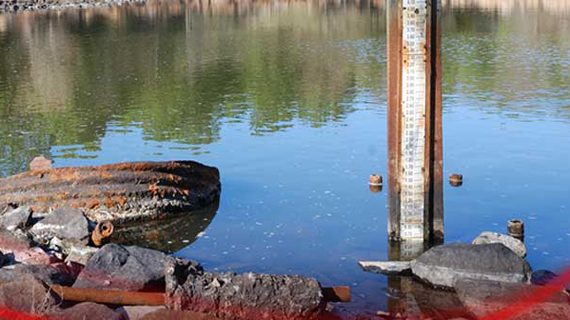
THE INSIGNIFICANT inflows into Bulawayo’s six supply dams’ midway through the 2013-2014 rain season should once again jolt the government to take the city’s perennial water problems seriously.
According to council statistics made available last week, by Tuesday Inyankuni and Upper Ncema dams were 7,5% and 5,8% full respectively despite the heavy rains that pounded the city during the festive season.
Insiza Dam, which is the largest supply dam, is only 52% full while water levels at Lower Ncema at 24, 5% and Umzingwane (16%) are not reassuring for city residents who have endured years of tight water rationing.
Mtshabezi Dam is 92% full, but just like the case with Insiza, the pumping capacity is limited.
The sad reality is that water restrictions would not go away anytime soon.
Water shortages do not only raise the prospect of diseases such as dysentery, cholera and typhoid, but they have been cited as one of the major reasons for massive company relocations and closures haunting Bulawayo.
The government has for a number of years promised to get serious with the implementation of the Matabeleland Zambezi Water Project (MZWP), the only permanent solution to the region’s water shortages.
However, progress has been very slow with the construction of the Gwayi-Shangani Dam — the core of the multi-billion project — taking years to complete.
- Chamisa under fire over US$120K donation
- Mavhunga puts DeMbare into Chibuku quarterfinals
- Pension funds bet on Cabora Bassa oilfields
- Councils defy govt fire tender directive
Keep Reading
Boreholes at the high-yielding Nyamandlovu Aquifer that were drilled by donors at the height of the 1992 drought have been vandalised and neglected under the government’s watch.
The Zimbabwe National Water Authority — a government agency – manages the boreholes, which could provide a medium solution to the water problems.
Poor inflows into the dams once again serve to drive home the point that the government has to stop waiting for the rains to end the water shortages.
A massive investment on the water infrastructure of Bulawayo and the centres that lie on the MZWP corridor should be a priority.
As long as Bulawayo continues to face water problems, there would be no investment and soon it would be a ghost town.










